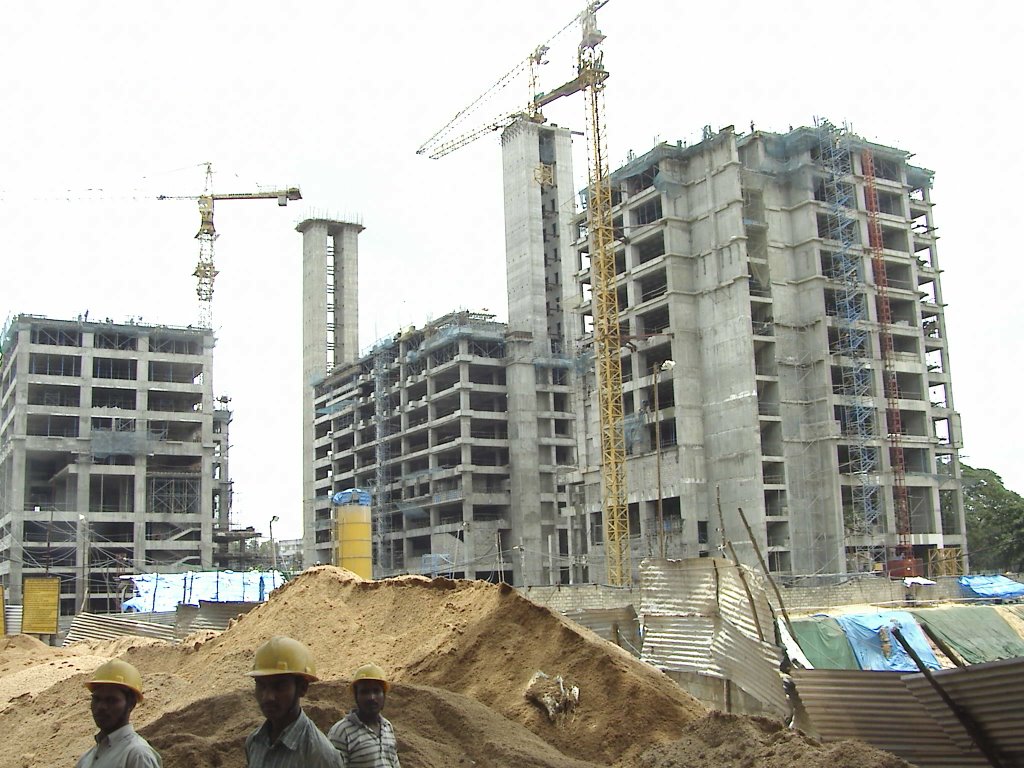Anshuman Magazine, chairman and managing director of CBRE South Asia Pvt. Ltd., in a recent article writes that “around 1.2 crore completed houses” are “lying vacant across urban India”. This one number tells us all that is wrong with Indian real estate.
Even though there is a huge housing shortage in urban India, 1.2 crore completed homes are lying vacant. As the latest Economic Survey points out: “At present urban housing shortage is 1.88 crore units.”
So, we have this situation where 1.2 crore completed homes are lying vacant even though there is a housing shortage of 1.88 crore in urban India. What explains this discrepancy? “95.6 per cent [of housing shortage] is in economically weaker sections (EWS) / low income group (LIG) segments,” the Economic Survey points out.
What the huge number of vacant homes also tells us is that real estate companies have been building and selling homes at price points at which there are few takers. Why is that? The answer for that lies in the fact that homes are being built essentially for those who want to invest and speculate.
Hence, investors control the real estate market in India instead of those who want to buy and live in homes. These investors are more comfortable keeping the homes empty and not put them on the rental market. The rental yield (i.e. annual rent dividend by the market price of the home) currently varies between 2-4% depending on which part of the country you live in. Hence, the return is not good enough to compensate for the risks involved in letting the house out on rent. Given this, a lot of homes are bought and then stay locked.
The next question that crops up is why is there so much investment demand for homes? The simple answer is that the amount of black money that is being generated has gone up tremendously over the years. Global Financial Integrity estimates that between 2003 and 2012, the total amount of black money leaving the country jumped from $10.1 billion to $94.8 billion, a jump of more than 9 times.
No reliable estimates are available for the total amount of black money that would have been generated during the same period.
But what this tells us is that the amount of black money being generated has grown up manifold over the years. It is safe to say that a lot of this black money has found its way into real estate, where it is very easy to park black money. And this has pushed up real estate prices to levels at which most people cannot afford to buy a home to live in. The buying and selling of real estate is now a game played majorly between the black money wallahs.
As a recent study by the business lobby FICCI titled A Study On Widening Of Tax Base And Tackling Black Money published in February 2015 points out: “The Real Estate sector in India constitutes for about 11 % of the GDP15 of Indian Economy, as these transactions involve high transaction value. In the year 2012-13, Real Estate sector has been considered as the highest parking space for black money.”
And this has led to a situation where we have more than a crore homes where no one is living. AkhileshTilotia, makes a similar point in his book The Making of India—Gamechanging Transitions. As he writes: “Thanks to its love for real estate investments, India is in a curious position of having more houses than it has households.”
This becomes clear from the Census 2011 data. “India’s households increased by 60 million to 247 million from 187 million between 2001-2011. Reflecting India’s higher ‘physical’ savings, the number of houses went up by 81 million to 331 million from 250 million. The urban increases is telling: 38 million new houses for 24 million new households,” writes Tilotia.
Unless the black money menace is brought under control, homes will continue to remain locked and unaffordable for most Indians. Further, renting has to be made an attractive option for those owning homes. As Magazine of CBRE points out: “The Rent Control Act 1992 is slightly skewed towards tenant protection, and is aimed at controlling rent. It tries to protect tenants from eviction and from having to pay more than a fair/standard rent amount. The Act may need to be revisited to make rental housing attractive enough for landlords as well.”
If more homes at affordable price points do not become available in the years to come, more and more of our cities will become slums. As the Economic Survey points out: “Nearly 30 per cent of the country’s population lives in cities and urban areas and this figure is projected to reach 50 per cent in 2030.”
Now that is something worth worrying about.
(Vivek Kaul is the author of the Easy Money trilogy. He tweets @kaul_vivek)
The column originally appeared on Firstpost on Apr 30, 2015
